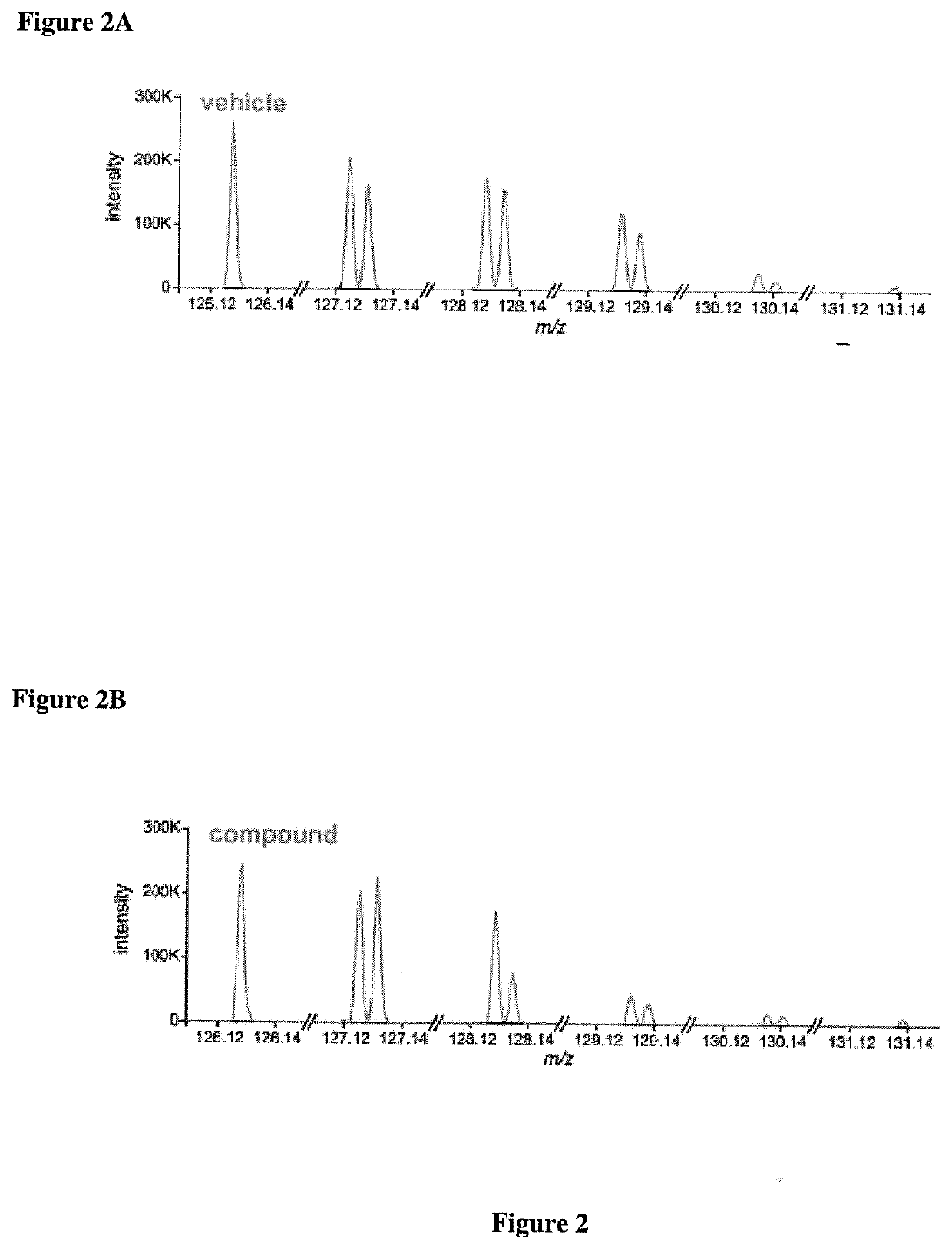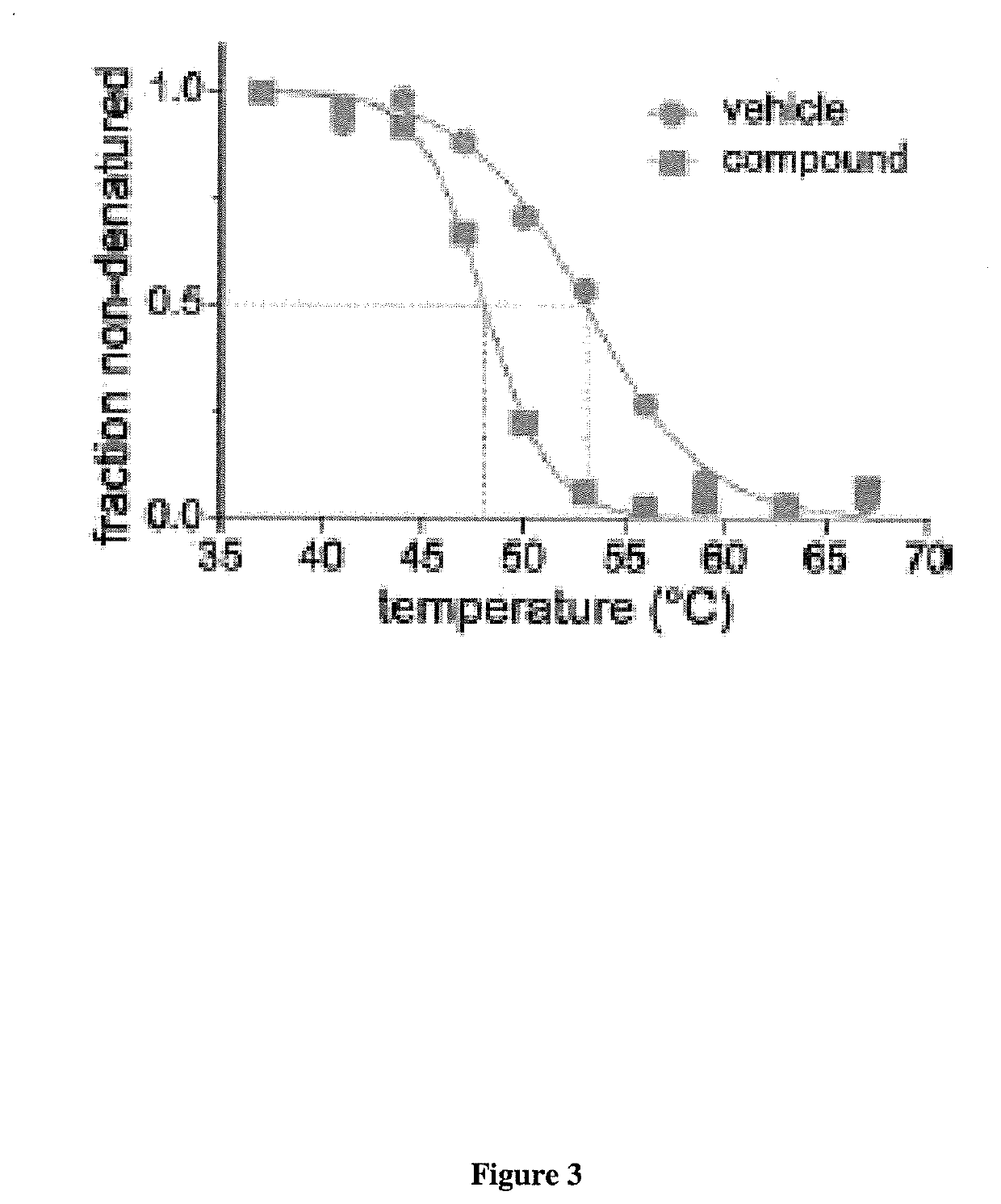Microfluidic Devices And Methods For Cellular Thermal Shift Assays
a microfluidic device and cell technology, applied in the field of thermal shift assays, can solve the problems of inability to perform thermal shift assays, inability to use thermal blocks, and inability to achieve thermal shift assays, so as to increase the effective diffusivity of fluids and enhance the rate of diffusion
- Summary
- Abstract
- Description
- Claims
- Application Information
AI Technical Summary
Benefits of technology
Problems solved by technology
Method used
Image
Examples
example i
Conventional Determination of Ligand Binding by Melting Temperature Thermal Shifting
[0149]This example demonstrates a current state of the art method to determine ligand protein binding by identifying a protein melting temperature shift. Savitski et al., “Tracking Cancer Drugs in Living Cells by Thermal Profiling of the Proteome”Science 346:6205, 1255784-1-1255784-10 (2014).
[0150]Cells were cultured under differential conditions, such as with and without drug treatment. The cells were extracted first, and the extracts were treated with drug (“1”). For each condition, the cell or cell-extract sample was divided into 10 aliquots (“2”). Aliquots were subjected to heating at the indicated temperatures. Samples of intact cells were subsequently subjected to extraction with PBS (“3”). After digestion with trypsin, each sample was labeled with a different TMT10 isotope tag (“4”). FIG. 1.
[0151]Subsequently, all samples from each condition were mixed (“4”) and analyzed by means of liquid chr...
example ii
Improved Relative Protein Abundance (Delta Y) Determination of Protein-Ligand Binding
[0153]This example shows the superior performance of a relative protein abundance method (Delta Y) as compared to a protein melting temperature (Delta X) method to identify protein-ligand interactions.
[0154]Briefly, a database of defined protein melting point temperatures was constructed. Savitski et al. (2014). These Tms were determined by: i) using cell extracts (e.g., K562 cell extracts); ii) mixing the cell extracts with either vehicle or staurosporine for ten (10) minutes. Using a standard PCR heating block, the cell extracts were heated for three (3) minutes followed by cooling for three (3) minutes and then subjected to centrifugation. The soluble fraction (e.g., supernatant) was collected and subjected to in-gel digestion. Each individual protein was then bound to a different TMT10 label. The differentially TMT10 labeled proteins were then subjected to RP / RP LC-MS / MS. This protocol identifie...
PUM
| Property | Measurement | Unit |
|---|---|---|
| temperature | aaaaa | aaaaa |
| melting temperature | aaaaa | aaaaa |
| melting temperature | aaaaa | aaaaa |
Abstract
Description
Claims
Application Information
 Login to View More
Login to View More - R&D
- Intellectual Property
- Life Sciences
- Materials
- Tech Scout
- Unparalleled Data Quality
- Higher Quality Content
- 60% Fewer Hallucinations
Browse by: Latest US Patents, China's latest patents, Technical Efficacy Thesaurus, Application Domain, Technology Topic, Popular Technical Reports.
© 2025 PatSnap. All rights reserved.Legal|Privacy policy|Modern Slavery Act Transparency Statement|Sitemap|About US| Contact US: help@patsnap.com



